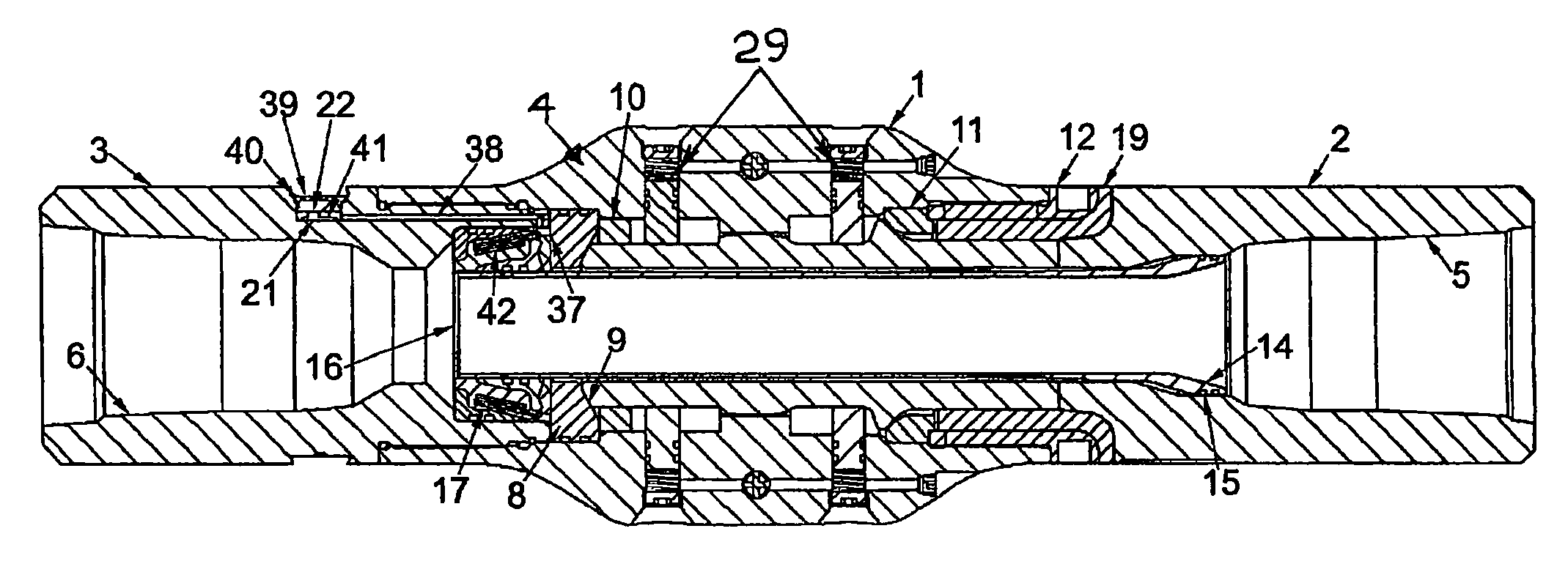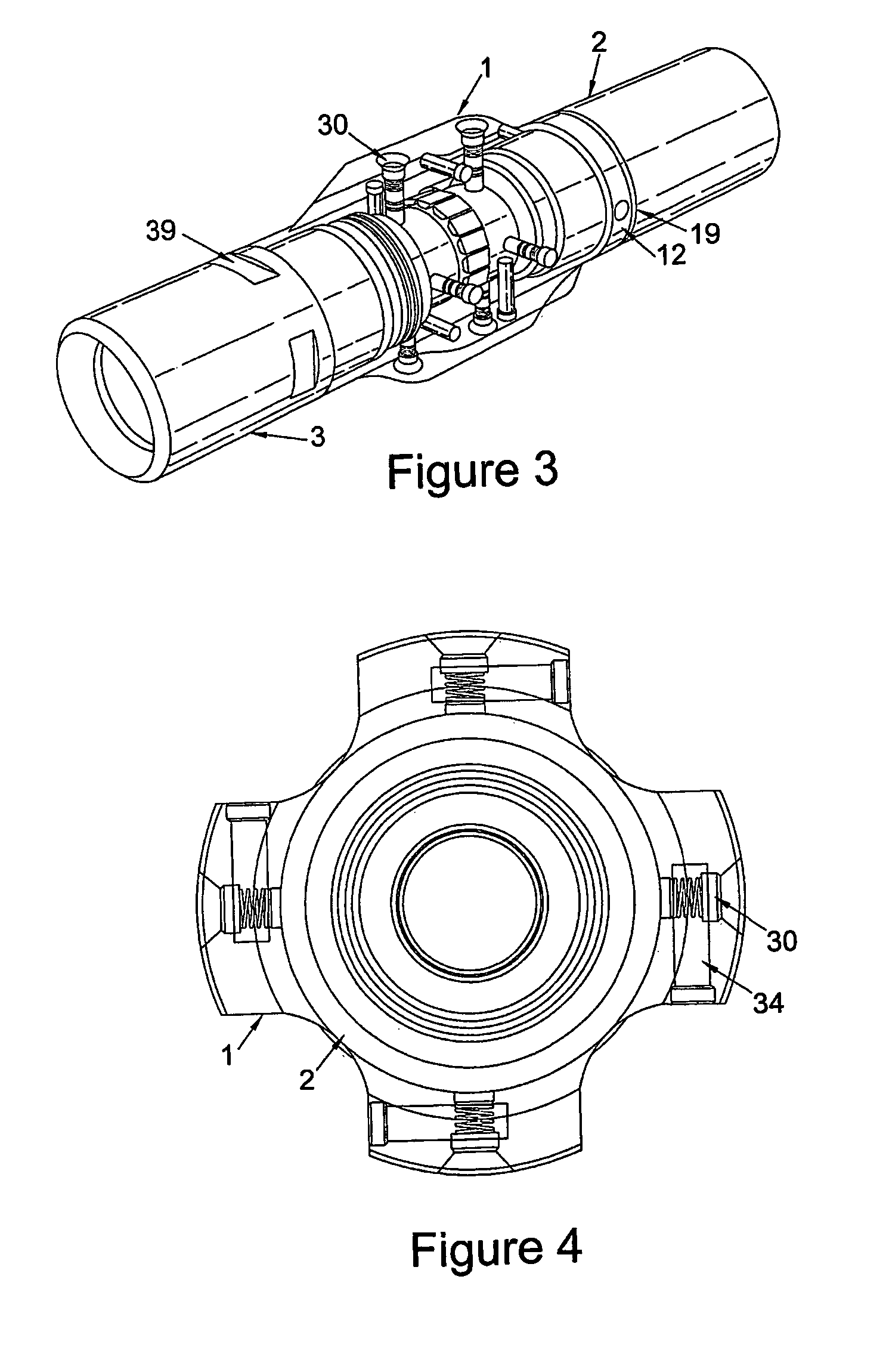Downhole assembly
a technology of drill string and assembly, which is applied in the direction of drilling accessories, drilling machines and methods, earth-moving drilling and mining, etc., can solve the problems of torsional vibration of drill string, failure of drill string, and added expense of remedial work, and achieves simplified hydraulic circuitry
- Summary
- Abstract
- Description
- Claims
- Application Information
AI Technical Summary
Benefits of technology
Problems solved by technology
Method used
Image
Examples
Embodiment Construction
Including a Functional Explanation
[0098]The device will first be discussed in general terms in order to explain embodiments of the invention. It will be described in several forms, all of which have similar objectives and which have varying degrees of technical complexity. Principally, this device differs from prior art in the field of downhole vibration damping in that it provides damping for rotational, longitudinal and lateral vibrations, it is responsive to information conveyed to it in real time from the surface of the Earth, that it is constructed with an inherently variable natural frequency and that, advantageously, it seeks to harvest energy from the downhole environment.
[0099]Referring to FIG. 1: The instant stabilized mechanism comprises a stabilizer sleeve element [1] which is radially co-located about a bi-partite internal mandrel sub-assembly [2], [3]. The stabilizer may be equipped with any of a variety of well understood stabilization means [4] which formats may incl...
PUM
 Login to View More
Login to View More Abstract
Description
Claims
Application Information
 Login to View More
Login to View More - R&D
- Intellectual Property
- Life Sciences
- Materials
- Tech Scout
- Unparalleled Data Quality
- Higher Quality Content
- 60% Fewer Hallucinations
Browse by: Latest US Patents, China's latest patents, Technical Efficacy Thesaurus, Application Domain, Technology Topic, Popular Technical Reports.
© 2025 PatSnap. All rights reserved.Legal|Privacy policy|Modern Slavery Act Transparency Statement|Sitemap|About US| Contact US: help@patsnap.com



